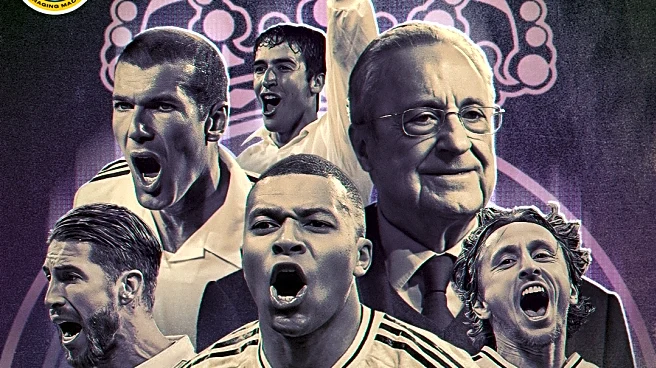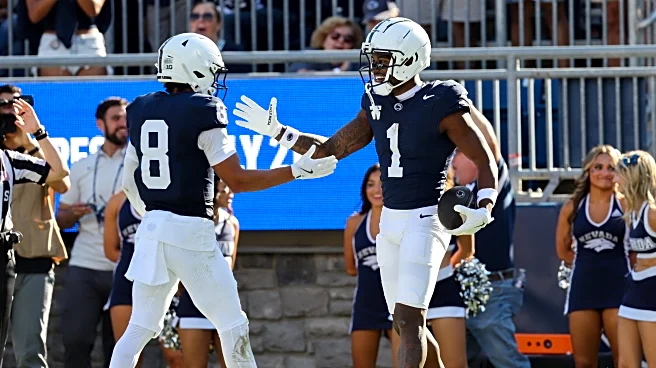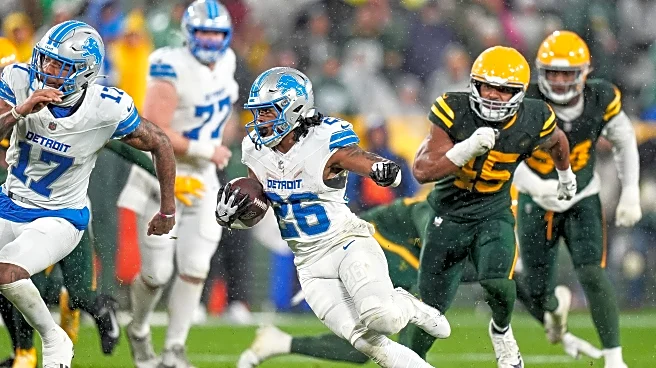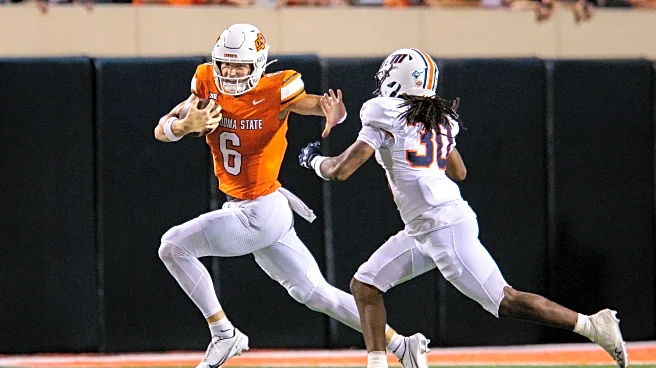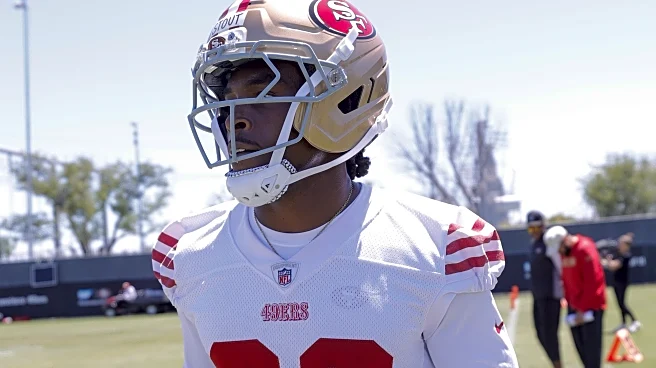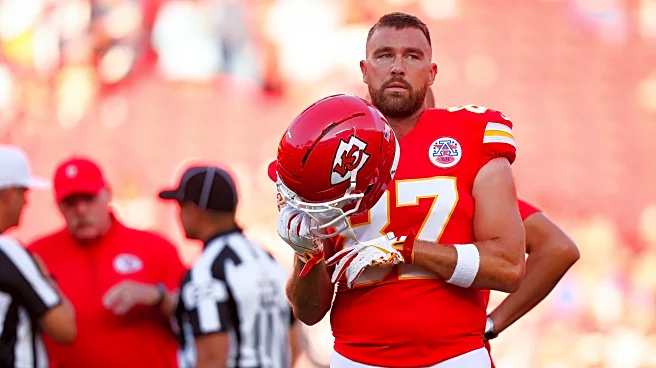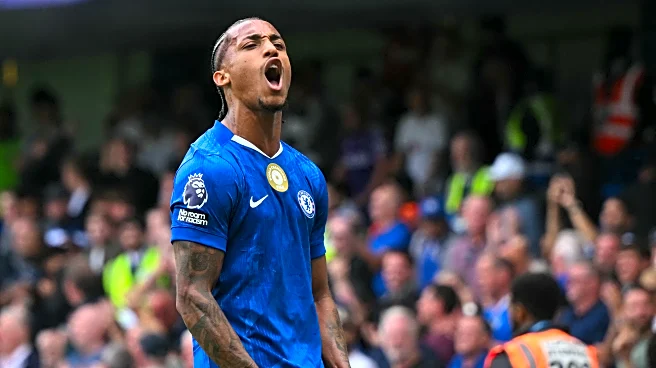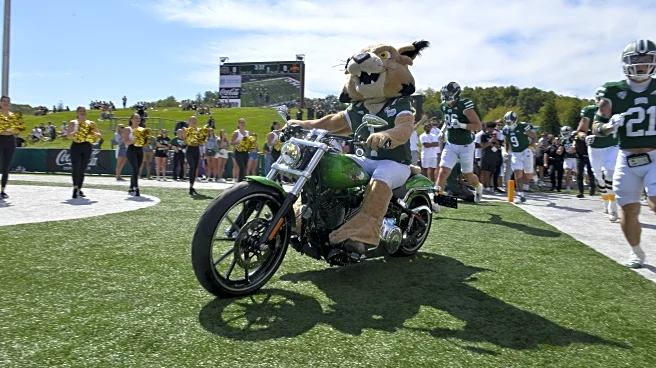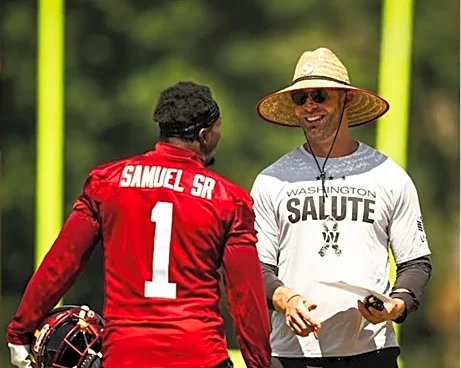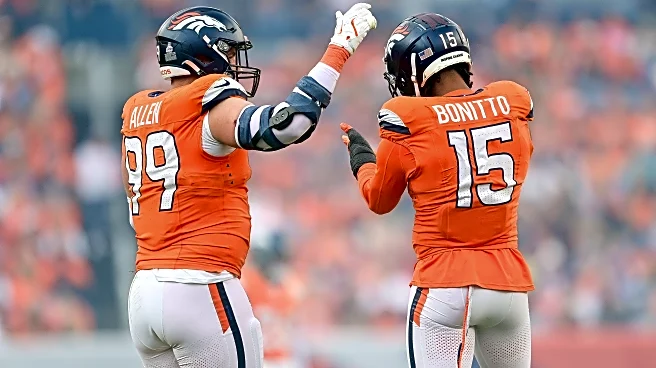
It’s time to answer the most important questions Real Madrid fans have. The importance of these questions are science-backed! I asked fans on X, Facebook, YouTube, Managing Madrid, and Patreon to submit their best questions, and I chose them based on an upvote system, meaning, the questions that had the most likes were the questions that I addressed (in the order of most likes). So the first question I answered is the most ‘upvoted’, and so forth.
One exception: Someone asked about my salary. I, um,
omitted that one.
With that out of the way, let’s answer 20 Real Madrid questions of utmost importance:
1. Losing connection with your team
Don’t sweat it. Seriously.
I went through this phase in the late 2000s. I had lost all of the players I grew up watching: Roberto Carlos, Fernando Hierro, Fernando Redondo, Zinedine Zidane, and so many others. Raul was still there, but a shell of himself. The Gravesen / Pablo Garcia era was painful to watch. Certain things hooked me in, like the prolific comebacks with Fabio Capello, but largely it was tough getting excited for run-of-the-mill games, especially with the long streak of round-of-16 Champions League exits and the little amount of truly special games we had to look forward to.
Did I watch everything still? Yes. Did I love the club? Yes. Was I excited to watch every game? Not really, and I would be lying if I said I wasn’t more excited to watch Toronto Raptors games at that time.
SUBSCRIBE: The Managing Madrid Podcast On YouTube
But, the phase passed. We lost Raul, Zidane, Figo, Carlos — but we eventually got Sergio Ramos, Marcelo, Toni Kroos, Luka Modric and Cristiano Ronaldo. Karim Benzema won our hearts. When he left, Jude Bellingham, Fede Valverde, and Vinicius Jr gave us unforgettable memories.
I am missing players, but that’s kind of the point: This club has given us a lot, that it’s impossible to talk about everyone and everything — and you’ll be surprised at how quickly Real Madrid will draw you back in again. There will be players you fall in love with, moments you will never forget, and it will happen quickly — with players you might not know even exist yet.
2. If Mbappe defends more, will that decrease or increase his offensive output?
The latter. People don’t often realize how connected defense is to offense. When Jurgen Klopp had his front-three — Mohamed Salah, Roberto Firmino, Sadio Mané — pressing like the lives of their families were on the line, do you think that increased their offensive output, or decreased it?
Better pressing leads to better chances. Period. This is part of the challenge in convincing the “Mbappe shouldn’t have to press” crowd: they don’t get how Mbappe’s own offensive output — and more importantly, the team’s collective success — increases if everyone buys in to Xabi Alonso’s scheme.
A high line defends from the front. It has always been this way. Three at the back, with a high line, will get ripped to shreds if the first line of defense is a sieve.
“I told everyone that as long as you are not Messi, you have to defend” – Jurgen Klopp
You have to give Xabi Alonso, as well as Mbappe and Vinicius Jr, all the benefit of the doubt that they can make it work — and the signs against Real Oviedo and Mallorca were promising.
3. The moment that changed everything?
Accurately rated moments that changed everything: 1) Sergio Ramos’s header against Atletico Madrid in the 2014 Champions League final; and 2) Claude Makelele getting sold in 2003.
Most underrated: Jesus Gil disbanding Atletico Madrid’s youth team in 1992.
In 1992, five years after Gil was elected president of Atletico, their club was bleeding money. Gil decided that a way to cut costs was to disband the youth academy.
Let me repeat what I just said for dramatic effect: Gil decided that a way to cut costs was to disband the youth academy. Jesus Gil, president of Atletico Madrid, decided in order to save money, he’d get rid of all his young talent, and stop producing them to save money. Are you following this? Let me make this clear: Instead of grooming cheap young players and selling them for a profit, he decided it was financially more savvy to get rid of them all, and make no money from what should’ve been a great source of revenue. That’s the equivalent of getting on your knees and looking for pennies in the crevices of your couch while there are $100 bills falling from the sky, just a few feet away.
JOIN: Managing Madrid Members-only content to be part of a lot of bonus episodes
Raul at the time was in Atletico’s youth academy, and was already a promising player. So he, like every other player in the academy, needed a new home. Easy, why not just head across town? Raul joined Real Madrid’s youth team, and two seasons later, made his debut for the senior side. He then went on to become one of the greatest and most iconic players in Spanish football history.
Can you imagine Real Madrid’s history, post 1994, if Raul was never part of it? I just threw up.
4. What if Kiyan Sobhani was the coach?
If I was hired as Real Madrid manager, the first thing I would do is hire an assistant coach much smarter than me (Xabi Alonso), and make him the head coach — demoting myself to assistant coach who just fetches water and runs errands.
But I guess that’s not as fun as answering the question more directly.
The nerd in me would revisit all of the issues from last season and look into how they can be fixed, one by one. The biggest one: The team can’t be deploying a high line without an efficient press. You have to have both, or neither — you either need to stay compact deep, or be aggressive and cohesive with your press.
FOLLOW: Managing Madrid on Instagram
I’d also look into using the profiles that could’ve helped Real Madrid last season with ball progression (Arda Güler), look at promoting players with specific profiles who could help with providing a presence in the box (Gonzalo Garcia), and urge the club to sign wing-backs and defenders (already done).
There should also be a system of meritocracy, so that we avoid a situation where players, indisputably, play because of their seniority rather than what they’re doing on the field. Introduce healthy competition, reward players who impress in their limited minutes. Rotate — keep the nucleus of the team fresh and healthy for the climax of the season (March / April / May). Avoid blueprints which demand one or two players (Jude Bellingham, Fede Valverde) to cover most of the ground and have their lungs fizzle out. Thibaut Courtois can’t be your best player every game.
5. What will happen to Real Madrid when Florentino Perez retires?

It’s a great question that everyone is asking but few (if any?) have an answer to. We’ll have to find out — and hopefully we won’t find out the rough way.
I think this is Florentino Perez’s last tenure. After 2029, he’ll likely be done. He’ll leave having set an incredibly high bar, with only a handful of people eligible to succeed him. Will we get another (corrupt) Ramon Calderon-type? Will we get a Lorenzo Sanz-type (well respected, but left the club in a poor financial state)?
It’s hard to say, and it’s reasonable to be worried. Perez, along with Santiago Bernabeu Yeste, are the two greatest presidents in club history. There is no one in football who ran their club better than Perez in the last 30 years. The team’s financial situation is incredible — and it’s all down to the revenue they generate and the expenses they monitor rather than reliance on an entire state that patches up heavy losses. You won’t find a healthier financial situation in this sport.
The good thing is, the way the club is set up, the incoming president will care about the club — this is a guarantee given that the nominee has to be a long-standing socio. You won’t find a Peter Lim (an owner who doesn’t care) here, ever. Keep an eye on Rafa Nadal and Manolo Sanchis — both of whom meet the requirements and are well respected.
6. Can Mastantuono and Güler co-exist?
I think Arda Güler will play a deeper role than Franco Mastantuono this season but I do think this is a fair question to ask. Mastantuono will be ‘competing’ with Brahim Diaz, and he can also provide rest for Jude Bellingham — possibly even soak some Bellingham minutes to start the season as the Englishman recovers from his shoulder surgery.
(I wrote that first paragraph before the season started, and just left it since that’s exactly what happened.)
Any combination of these players can co-exist, theoretically, but the success rate of putting it into practice depends of the context of the surrounding scheme and other players involved. We’ve seen ‘double 10’ line-ups work plenty in European football over the past decade. But we’ve also seen it lead to defensive collapse if not used properly.
That’s why Xabi Alonso’s workaround has been to put Güler deeper, and Bellingham higher. When the team is building out from the back, Güler will drop, while Bellingham will move between the lines higher up the pitch to provide an outlet. Mastantuono can fill the Bellingham piece of this puzzle, but doesn’t have the deep-lying playmaking ability of Güler.
Whatever the case, when Bellingham returns, I don’t see a symmetrical formation where a right winger occupies the third attacking zone. I’m not sure how it all works with Bellingham in the team because in order to play all of Mastantuono, Bellingham, and Güler, you’d have to drop a midfielder and play top-heavy, which is a dangerous game to play.

7. What is Jude Bellingham’s best position?
(No screenshot included because the person who submitted this question deleted their tweet, but it was already upvoted and I’m going to answer it below.)
First and foremost: Jude Bellingham’s best position is having him on the field somewhere — and I mean this in the most complimentary way possible. Players like him, Fede Valverde, Luka Modric, Alfredo di Stefano are so multifunctional and special — so elite at so many things — that defining their position is a bit problematic, and almost does them a disservice. This is why aforementioned players can also get underrated at times. Those who don’t watch them play regularly are confused as to how to measure them, especially if they’re going by analytics.
Bellingham is an 8, 10, 9.5, and even half of a double-6.
But, if we had to define him into a sharper, rigid role, I would say he’s a hybrid between and 8 and a 10, and the only reason people have difficulty accepting him as a midfielder is because he went on a scoring tear to start the 2023 – 2024 season after Karim Benzema departed and it threw everyone’s brains out of whack.
His defensive ability is best used in a pressing scheme where he can pick off passes and rack up interceptions as part of a collective defensive effort. From those positions, he’s in prime real estate to play the dagger ball or get into a goal-scoring position — this is why I think he’ll thrive in Xabi Alonso’s blueprint.
I also think he’ll get on the ball a lot more in a possession-based model which emphasizes control and off-ball movement. We’ll see him showcase his ability to dictate — an underrated trait of his.
8. When Jude Returns….
This one is incredibly straight forward. Bellingham’s return as a focal point in the team is not in question. It is inevitable.

Without wanting to repeat what was said above, Bellingham is everything Xabi Alonso dreams of: A jack-of-all trades that can fill in almost any position in his scheme, whether it’s the Wirtz role or Palacios role, Bellingham is there: Pressing, creating, scoring, controlling.
What I will say: I believe Xabi Alonso can get the team to function in the event of the loss of a significant player like Jude Bellingham because I believe that the team will now be reliant on the collective system rather than star players needing to turn into a superheroes. I would not be surprised if Real Madrid play well without Bellingham (already happenning), but it will not be a sign that the team is better without him, and I’d fully expect him to ease his way back into a key starting role, with the first one-or-two games back off the bench as he reacclimatizes himself into match fitness and rhythm.
9. Discussing Fernando Redondo

I don’t know if Fernando Redondo actually isn’t talked about as much as Claude Makelele. It depends on who, and what generation you’re speaking to. But if Redondo isn’t talked about as much as Makelele, it’s because Makelele’s departure was connected with a catastrophic collapse of the team, whereas Redondo’s departure wasn’t.
Real Madrid got really lucky with Redondo’s departure. Despite doing their best to spark anarchy in the streets of Madrid, pushing out a club legend — and probably the greatest defensive midfielder the world had ever seen up until that time — Makelele came in and locked the position down. The torched was passed efficiently and unintentionally.
Yes, unintentionally. Yes, Real Madrid should get credit for signing Makelele that summer, but clearly they didn’t value him much, if, three years later, they ignored his request for a better contract despite him being as important as anyone else on the team, and gladly accepted his transfer request, leaving this parting message from Florentino: “He wasn’t a header of the ball and he rarely passed the ball more than three metres. Younger players will arrive who will cause Makélélé to be forgotten.”
Apart from that time my son told me he was going to beat me in a 1v1 footy game before I annihilated him, I’ve never seen a quote age so badly.
Bullet point answers to the first two questions posed:
- Redondo had the highest peak between the three as an all-around controller, organizer, dribbler, and deep-lying ball progressor
- Sergio Busquets had the best career
- Makelele was the best defensively
- Camavinga doesn’t have the organizational and positional ability that Redondo had; nor does he have the press-evasion Redondo had from the DM position.
10. Soul-sucking departures

If we’re discounting Kroos and Makelele, there are still plenty. I’ll give you (a perhaps too obvious one): Cristiano Ronaldo. Real Madrid’s offense fell off a cliff in the 2018 – 2019 season.
A more under-the-radar one is Esteban Cambiasso. He was the perfect solution to the Makelele departure. Cambiasso fit modern football. He was not the bruising defensive midfielder that Perez complained about (and ironically later ended up with much inferior versions of that destroying, “technically-limited” player in Emerson and Mahamadou Diarra anyway). Cambiasso could dribble. He had vision. He could’ve filled a Fernando Redondo role within the club: An elegant organizer who could defend but also play out of the back and contribute to the team’s build-up. Plus he was free! A youth product!
Bullet point answers to your last question (mostly hipster stuff):
- In his first season, Davor Suker scored three hat-tricks, led the team in scoring (29 goals in 43 games), and helped Real Madrid win the league title — a massive upgrade from the sixth place finish from the season prior.
- In Jacinto Quincoces’s first season (1931-1932), Real Madrid went undefeated en route to a La Liga title. Quincoces is almost never listed by casuals when speaking about the greatest defenders in Real Madrid history, but he’s in the top-10.
- Uli Stielike was one of the best to ever stop by and play as Real Madrid’s anchor (then classified more as a ‘sweeper’). His positioning and understanding of the game was a model for aspiring DMs, and he was great on the ball too. What struck me watching him play was how much Real Madrid relied on him to progress the ball. He would drop deep, carry the ball vertically, distribute, and keep moving. In his first season (1977 – 1978) at the club, he even scored 13 goals (the second most of anyone on the team after Santillana).
- When Luis Figo left Barcelona for Real Madrid, the tide shifted. Barcelona became a mediocre team fighting for a UEFA Cup spot, while Real Madrid reached the Champions League semi-finals and won La Liga in Figo’s first year – the same year he lifted his Ballon D’or trophy.
- Michael Laudrup, for reasons similar to Figo above.
- Off the top of my head: Ivan Zamorano, Alfredo di Stefano, Ferenc Puskas, Hugo Sanchez, Cristiano Ronaldo, Kylian Mbappe, Zinedine Zidane, Raul!
11. Best game I’ve been at as a fan?
I wish I had a ‘fun’ answer to this. I’ve only been to one game as a non-journalist, and that was in 2005: A friendly against Chivas Guadalajara in Chicago.
But thankfully, it does have some sentimental value.
Back in 2005, as my high school graduation gift, my father booked us tickets to Real Madrid’s pre-season game against Chivas Guadalajara in Chicago. It was, despite it being an incredibly irrelevant game in Real Madrid’s history, a match I’ll never forget. It was the first time I had ever seen Real Madrid play in person.
FOLLOW: Kiyan Sobhani on Instagram
Some 20 years later, I’m somewhat desensitized to it. But despite seeing so many big games since, that particular one in 2005 has a special place in my heart. My dad and I watched every Real Madrid game together on the television growing up. Seeing them together in person was extra special. It was, to this day, the only time my father and I watched a Real Madrid match in person together.
12. Should TV rights be distributed equally?
I would be lying if I stated I wasn’t worried about the league as a whole. The depth is withering. We grew up with Super Depor, Mendieta’s Valencia, Riquelme’s Villarreal, Xabi’s La Real, Joaquin and Denilson at Betis, Sevilla perpetually good. Now? What do we have? Feel-good teams like Real Betis with Isco and Antony, Athletic Club and the Williams brothers. What else? And even that, is barely hanging on.
Javier Tebas is more interested in fighting piracy (ridiculous), public spats (petty), and giving unsolicited interviews (attention-seeking), than anything else.
Would a different TV revenue distribution system solve the problem? Possibly, but it would take time. The most recent change, which saw the TV rights change to a collective selling agreement, didn’t make a difference for Real Madrid and Barcelona, but it did see the revenues of everyone else rise — but it’s still not at Premier League level. Currently, La Liga has the revenue 50% distributed equally among all clubs, 25% is based on performance over the previous five seasons, and the remaining 25% is allocated based on “social implantation” factors such as ticket sales, audience size, membership numbers, and social media presence. For comparison, the Premier League distributes nearly 70% of its revenue equally. Not only is the entire Premier League pool bigger, but it’s also shared with more parity. Right now, fourth place teams in La Liga can have their best players picked off by 15th place teams in the Premier League.

Moving towards more equal revenue share could help, long term, in stabilizing the league.
13. Tactically misunderstood players

Great question. How much time do you have? Given this article is already unnecessarily long and attention spans are in the mud (who is even still reading this part of the article?) — I will keep it in bullet point form (past 25 years):
Karim Benzema, 2009 – 2018 (pre-Cristiano departure)
- People only measured him in goals
- They got angry any time Managing Madrid pointed out his pressing and link-up play or off-ball intelligence
Claude Makelele, 2000 – 2003
- Being labelled as a destroyer did him a disservice in some ways — people thought that’s all he was
- In reality, he was incredibly press-resistant, a tidy dribbler, and his short-range passing was very reliable.
Marcelo, 2007 – 2022
- Throwing in Marcelo here only because there is a small faction of (unintelligent) fans who think he wasn’t elite because of his defensive liabilities
- Marcelo’s entire purpose was to create ingenuity and link up with Cristiano Ronaldo to form a two-headed unstoppable force on the left wing, in, what remains to this today (and probably forever), the greatest left-wing / left-back dyad in football history.
- Do the math. The cost-benefit analysis is overwhelmingly positive. No one did what Marcelo did from that position.
Gareth Bale, 2014 – 2020
- The “perfect” winger tactically
- Nothing more needs to be said about his supernova offensive ability, but, he was also one of the best defensive wingers I’ve ever seen, and had the lungs to track anyone and anything that tried to sneak in behind on his wing. Often seen as the last man back, putting in pin point slide challenges. That side of his game is under-appreciated. (Shoutout to Angel di Maria for similar reasons.)
Ask me this again in 15 years and I’ll be writing about Fede Valverde and Jude Bellingham.
14. What if… Luka Modric retired before Toni Kroos?

I’m happy with how everything turned out, even if that’s illogical.
Are Real Madrid better with Toni Kroos last season? Yes. Are they guaranteed to have won a major title with him, or would the team have imploded regardless given the ACL injuries and the rise of Barca in the league?
I’m being pessimistic about this: I think if Kroos had stayed one more year, he’s not leaving out on top. We don’t get one last iconic walk-off in a Champions League Final and he’s no longer cited as an example of “the guy who left football before the football left him” — even if it wouldn’t have been his fault.
I’m happy preserving Kroos’s legacy exactly as it is. He left football on perfect terms (ignoring the Euro blip in the summer with Germany), and we will forever remember that. Too many people stick around for far too long. It’s an art knowing when to walk away. Let’s not tinker with this. And yes, I am fully aware Kroos was sorely needed last season.

15. Too much reliance on Güler to “control”?



Valid question(s) and well thought-out analysis. I may be in the minority (but I may not be, given reliable backing by the Turkish army), but: I believe that Arda Güler has what it takes. He has the vision, tempo-control, and passing that’s necessary to fulfill this role. I don’t believe he will do it as well as Toni Kroos or Luka Modric, but I also believe no one on earth will do it as well as Toni Kroos or Luka Modric.
Your concern about — God forbid — an injury to Güler is fair, especially given that Dani Ceballos, the ‘other guy who can do it’ is generally only available for half the season.
But I also think Jude Bellingham is underrated at controlling games, and the main reason he is underrated in this aspect is because he’s a physical freak who can crash the box and score goals. Sometimes we completely forget that he models his game after Zinedine Zidane and that he’s really great at setting pace.
In the end, if you want to find Toni Kroos and Luka Modric — their profiles to a science — good luck.
I think we have to trust the way Xabi Alonso will use Güler and Bellingham.
One last thing that’s important to point out: To allow Güler the ability to set up the attackers, the attackers need to make runs into the box. If Real Madrid don’t have Gonzalo Garcia or Bellingham on the field, there’s only so much Güler can do with his playmaking. But, the Güler-to-Mbappe assists are one of my favourite things happenning right now.
16. Vinicius’s contract demands

I don’t think there is a black and white answer to this question; we have to lay out all of the facts and surround them with as much context as possible.
Here are the facts:
- Vinicius Jr was the most decisive big-game player in Europe for three years straight and is already a Real Madrid legend
- He was, two years ago, the best player in the world
- He has struggled in the past 8-10 months with unearthing offensive production we were accustomed to seeing from him
- Under Xabi Alonso, he’s looked great defensively, and in the last two games, it seems that we get back the best version of Vinicius.
- Vinicius is trying to adapt, now, to Alonso’s quicker-passing / quicker-movement style of football
- He does not have that much leverage in contract negotiations, nor is Real Madrid going to give in to his salary demands
- He needs to spend this entire season proving that he can get back to his best
- This is not Kylian Mbappe’s fault (a silly point that shouldn’t need to be addressed, but a common enough misconception). Mbappe has been the one to accommodate and move centrally. Vinicius has had his preferred left wing the entire time. There has to be accountability for his slump without blaming external factors.
- If he performs back this his Ballon D’or level this season, I believe he will receive a new contract, but not in the ball park he’s asking.
17. How worried should we be about Santiago Bernabeu construction?

We’re almost there — in the home stretch now. The renovation is essentially complete in terms of structure—the retractable roof, the futuristic skin, the pitch mechanism. What’s left now are the finishing touches: fit-outs, remaining retail, hospitality, and, crucially, as you asked about: extra soundproofing. That last point is important. The club ran into trouble last year when a string of concerts sparked noise complaints from neighbours and resulted in fines. By September 2024, Madrid pressed pause on live shows altogether. Since then, they’ve been working on improvements specifically designed to reduce noise leakage. The July 2025 financial report explicitly mentions “noise reduction works for concerts.” Translation: it’s not fully resolved yet, but they’re investing to make sure it will be. The plan is for concerts to return once the city gives the green light under compliant conditions.
Now, how much does this matter from a financial standpoint? It’s not worrying at all. The Bernabéu is already a monster revenue engine without concerts. Madrid just posted record revenue of €1.185 billion, with matchday and stadium-related income soaring thanks to VIP seating, the museum/tour, hospitality, retail, and corporate boxes. Deloitte’s benchmarking shows Madrid pulling in around €250 million in match-day alone, and that number will only grow as the building hums at full capacity.
Concerts, (as well as NFL games, tennis, etc)—those are cherries on top, but not what the club relies on as the primary source of income. They add useful upside (tens of millions a year if it runs smoothly), but the club’s core business model doesn’t depend on them. Madrid’s financial muscle post-renovations is rooted in football, hospitality, and commercial reach. The Bernabéu’s transformation amplifies that baseline, while concerts will eventually become a lucrative bonus once the noise issue is fully put to bed.
18. Players who didn’t live up to expectations

My ‘mainstream’ list is probably similar to yours and everyone else reading: Kaka (injuries broke him), Hazard (obvious) are top two. Pretty well every defender we signed from 2000 – 2010 struggled: Walter Samuel (world class at Roma, a bust at Real Madrid because it was much easier to defend in Italy), Fabio Cannavaro (ditto, although, to be fair, he had a very good second season at Real Madrid), Jonathan Woodgate (mostly injuries).
How about players who thrived in La Liga but couldn’t handle the Real Madrid pressure? I’m looking at Alvaro Odriozola who I thought would be the next menacing attacking right-back in the modern game; Asier Illaramdeni (just couldn’t handle the spotlight and play at the same level as he did in Real Sociedad).
I’ve give you a less mainstream one that always stands out as a special case when I get asked this question: Javier Portillo. After scoring 370 goals in the youth system, then coach Vicente del Bosque promoted him in 2001, and Portillo scored on his debut from 40 yards against Panathinaikos.
After that? He ended up falling horribly short of the expectations he set for himself, and spiralled into the lower divisions of Spain, “amassing” 21 goals in 131 matches for Gimnàstic, Osasuna and Hércules.
Although his one lasting moment was to save Real Madrid’s season in the 2002 – 2003 Champions League second round with a last-second goal against Borussia Dortmund:
19. Can Fede Valverde crack the all-time Real Madrid XI?

My calculated prediction here is that Fede Valverde will, by the time he retires, by in the Real Madrid all-time squad. He has not yet surpassed Pirri or Zinedine Zidane, nor has he surpassed Fernando Redondo, who, doesn’t play the same position, but, the only realistic way to fit all of Valverde, Luka Modric, and Toni Kroos in is to push Kroos back to the six.
But on this trajectory? Valverde is on pace. If he stays at the club for another five years (it’s probably more, but let’s say five for argument sake), and wins one or two more Champions Leagues, it’s going to be hard to exclude him.
But that last name in Frendik’s question — Bellingham — is also important to bring up. If Valverde wins two Champions League titles in the next five years, that means Bellingham is too, and Bellingham is five years younger than Valverde, and, at the pace he’s started his Real Madrid career, bar some meteor hitting the earth, he is going to be a bonafide, A-tier legend.
(By the way, where does that leave Aurelien Tchouameni? He’s likely the pillar of that success. He’ll have to be in a conversation, shortlisted as one of the best defensive midfielders in Real Madrid history.)
So where does that leave things? Here is my sharpened, long-term, low-risk prediction:
- Fede Valverde will surpass Pirri and Zidane eight years from now.
- Kroos gets pushed back as the DM, dropping Redondo, and Modric and Valverde will play as the CMs.
- We’ll have to figure out how to squeeze in Bellingham about 15 years from now
- If someone in the attack gets so good that he has to be in the all-time XI, there’s only one name you can drop and it’s Karim Benzema (Cristiano Ronaldo and Alfredo di Stefano will never be dropped) — but we are a long ways away from that. Benzema was a stud. His numbers are ridiculous and his legacy is bubble-wrapped pretty tight.

20. Should Rodrygo Goes be starting over Franco Mastantuono?
This is a million dollar question, and I have a take / explanation of the situation.
If you asked me who is the better player between Rodrygo Goes and Franco Mastantuono, I would answer Rodrygo. And yes, that includes any position: left, middle, right. But I don’t think Xabi Alonso is categorizing it the same way we are.
This is a matter of profile, not ranking. Alonso sees Rodrygo as a left winger, and he wants a more pure right winger on the opposite side. (Mastantuono is not a pure winger either, but he is more naturally right-sided.)
Right now (excluding the injured Endrick and Jude Bellingham), Alonso has six players for three positions, categorized as follows:
Left wing: Vinicius Jr, Rodrygo
Central forward: Kylian Mbappe, Gonzalo Garcia
Right wing: Mastantuno, Brahim Diaz

The challenge right now is that Mastantuono is not nearly as polished as Rodrygo, so if Alonso wants to stick him there because he believes it’s a better fit, there will have to be an acceptance of the growing pains that come with it. Mastantuono is less explosive, slower, and less cut-throat with his line-breaking.
But he does have some things going for him which makes the growing pains tolerable: He runs himself into the ground on defense (a Xabi-ball necessity), has nasty shooting ability, and is fearless.
This is stating the very obvious, but, Mastantuno is one of the youngest starters in the Real Madrid XI in the past 25 years — he is far from the finished product. We may even see a much improved version of him after the international break. Alonso obviously believes in him. There are already signs of his genius. Let’s answer this question again in six months.

